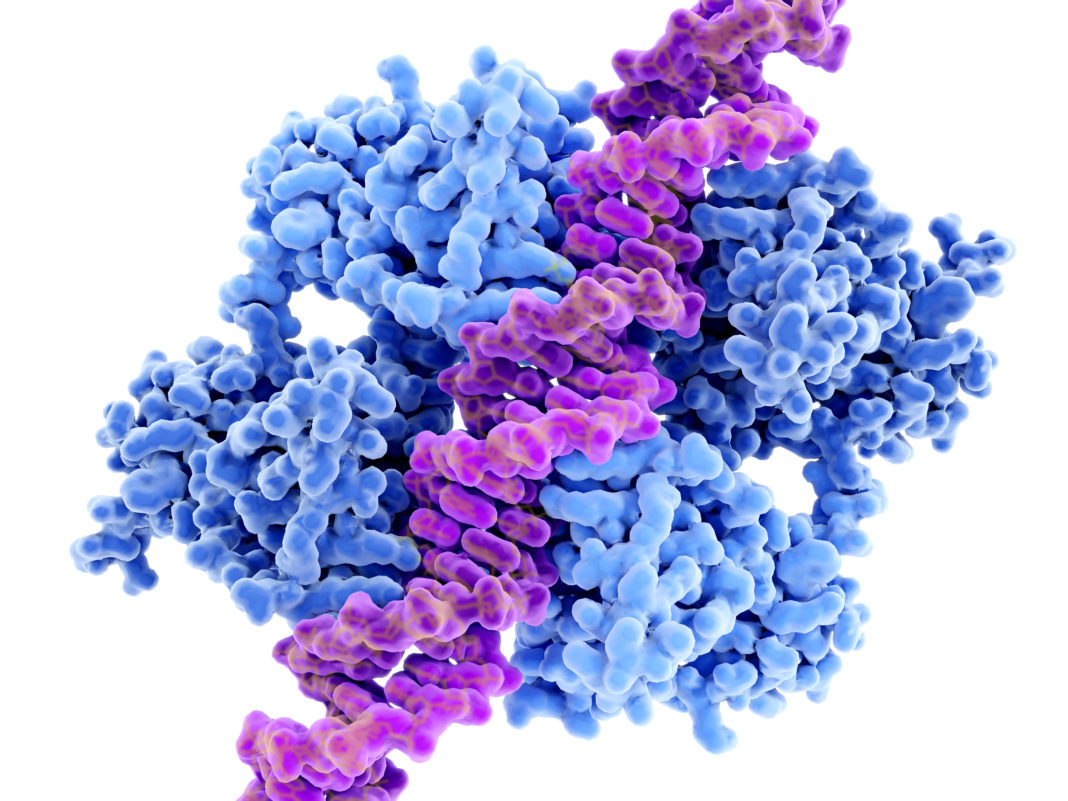The p53 gene is extremely important in cell biology as its role is to regulate the cell cycle and halt the formation of tumors, leading to its nickname the “tumor suppressor gene.”
However, previous efforts to determine whether p53 is behind apoptosis induced by DNA damage in pluripotent embryonic stem cells (ESCs) produced conflicting results. Initial studies said that it was not; later studies concluded that it was.
Now, researchers at the NIH have published a new report “Cell cycle arrest and apoptosis are not dependent on p53 prior to p53‐dependent embryonic stem cell differentiation” in Stem Cells that they say sorts through this maze of contradictions to finally determine that the multiple roles of p53 in cell cycle regulation and apoptosis are acquired during pluripotent stem cell differentiation.
Melvin L. DePamphilis, PhD, section chief of Eukaryotic DNA Replication at the National Institute of Child Health & Human Development, conducted the study along with his Institute colleagues Sushil K. Jaiswal, PhD, and John J. Oh.
“Previous efforts to determine whether or not the transcription factor and tumor suppressor protein p53 is required for DNA damage‐induced apoptosis in pluripotent embryonic stem cells (ESCs) produced contradictory conclusions. To resolve this issue, p53+/+ and p53−/− ESCs derived by two different methods were used to quantify time‐dependent changes in nuclear DNA content; annexin‐V binding; cell permeabilization; and protein expression, modification, and localization,” write the investigators.
“The results revealed that doxorubicin (Adriamycin [ADR]) concentrations 10 to 40 times less than commonly used in previous studies induced the DNA damage‐dependent G2‐checkpoint and completed apoptosis within the same time frame, regardless of the presence or absence of p53, p21, and PUMA. Increased ADR concentrations delayed initiation of apoptosis in p53−/− ESCs, but the rates of apoptosis remained equivalent. Similar results were obtained by inducing apoptosis with either staurosporine inhibition of kinase activities or WX8 disruption of lysosome homeostasis.”
“Differentiation of ESCs by LIF deprivation revealed p53‐dependent formation of haploid cells, increased genomic stability, and suppression of the G2‐checkpoint. Minimal induction of DNA damage now resulted in p53‐facilitated apoptosis, but regulation of pluripotent gene expression remained p53‐independent. Primary embryonic fibroblasts underwent p53‐dependent total cell cycle arrest (a prelude to cell senescence), and p53‐independent apoptosis occurred in the presence of 10‐fold higher levels of ADR, consistent with previous studies.”
“Taken together, these results reveal that the multiple roles of p53 in cell cycle regulation and apoptosis are first acquired during pluripotent stem cell differentiation.”
“If ESCs are to be used to form the basis of cell replacement therapies, then identifying the role or roles of p53 in pluripotent stem cells is essential,” said DePamphilis. “Our goal was to finally resolve this question of whether p53 is essential for inducing cell cycle arrest and/or apoptosis prior to ESC differentiation.”
The majority of earlier studies used ADR to induce apoptosis. ADR impacts DNA replication and mitosis, resulting in the accumulation of double-stranded DNA breaks in proliferating cells. Damaged DNA can trigger p53 to initiate apoptosis and prevent the duplication of damaged chromosomes.
As the levels of p53 rise, they prompt production of a protein called p21, which enforces a halt in the cycle dictated by p53. It does this by binding to and inhibiting the activity of the Cdk/cyclin complexes, whose job is to switch the cell cycle off and allow time for the damaged DNA to be repaired.
In the current study, the team likewise induced apoptosis using a 40-fold range of ADR concentrations as well as other chemotherapy drugs (staurosporine and WX8), all tested over a 50-fold range of cell seeding densities. To eliminate the possibility that conclusions depended on either the source or derivation of p53-/- ESCs, both wild-type and p53-/- ESCs derived directly from mouse blastocysts were characterized in parallel with ESCs in which the p53 genes were ablated in vitro from ESCs harboring conditional p53 gene knockouts.
“ESCs isolated from p53-/- blastocysts presented a chronic phenotype, whereas p53-/- ESCs engineered in vitro presented an acute phenotype that could be compared directly with their parental ESCs,” Jaiswal explained.
The results showed that regardless of derivation the ESCs did not require p53, p21 or PUMA (another critical protein involved in apoptosis that is induced by p53) either to activate the G2-checkpoint, which ensures that cells don’t initiate mitosis until damaged DNA is repaired, or to undergo apoptosis rapidly and efficiently.
“The effects of ADR concentration and cell confluency were marginal, but the effects of cell differentiation were dramatic; p53 dependent regulation of cell division and apoptosis were acquired during p53-dependent cell differentiation,” Oh said.
These results led the researchers to conclude that the study “unequivocally” demonstrates that the multiple roles of p53 in cell cycle regulation and apoptosis are first acquired during pluripotent stem cell differentiation.



